A particle of mass m is moving along the x-axis with speed v when It collides with a particle of mass 2m initially at rest. After the collision, the first particle has come to rest and the second particle has split into two equal-mass pieces that are shown in the figure. Which of the following statements correctly describes the speeds of the two places? (θ>0)
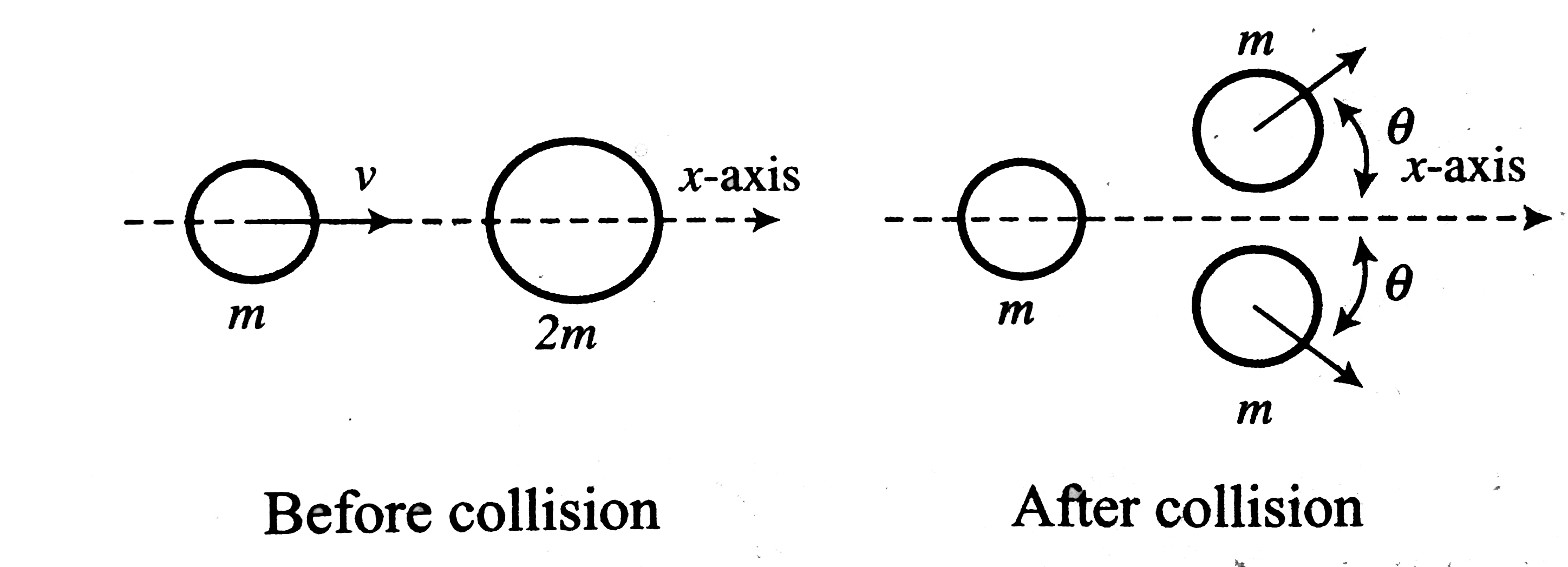
Each piece moves with speed v.
Each pece moves with speed v/2
One of the pieces moves with speed v/2, the othher moves with speed greater than v/2
Each piece moves with speed greater than v/2
The correct Answer is:D
After collision by momentum conservation Along y− axis
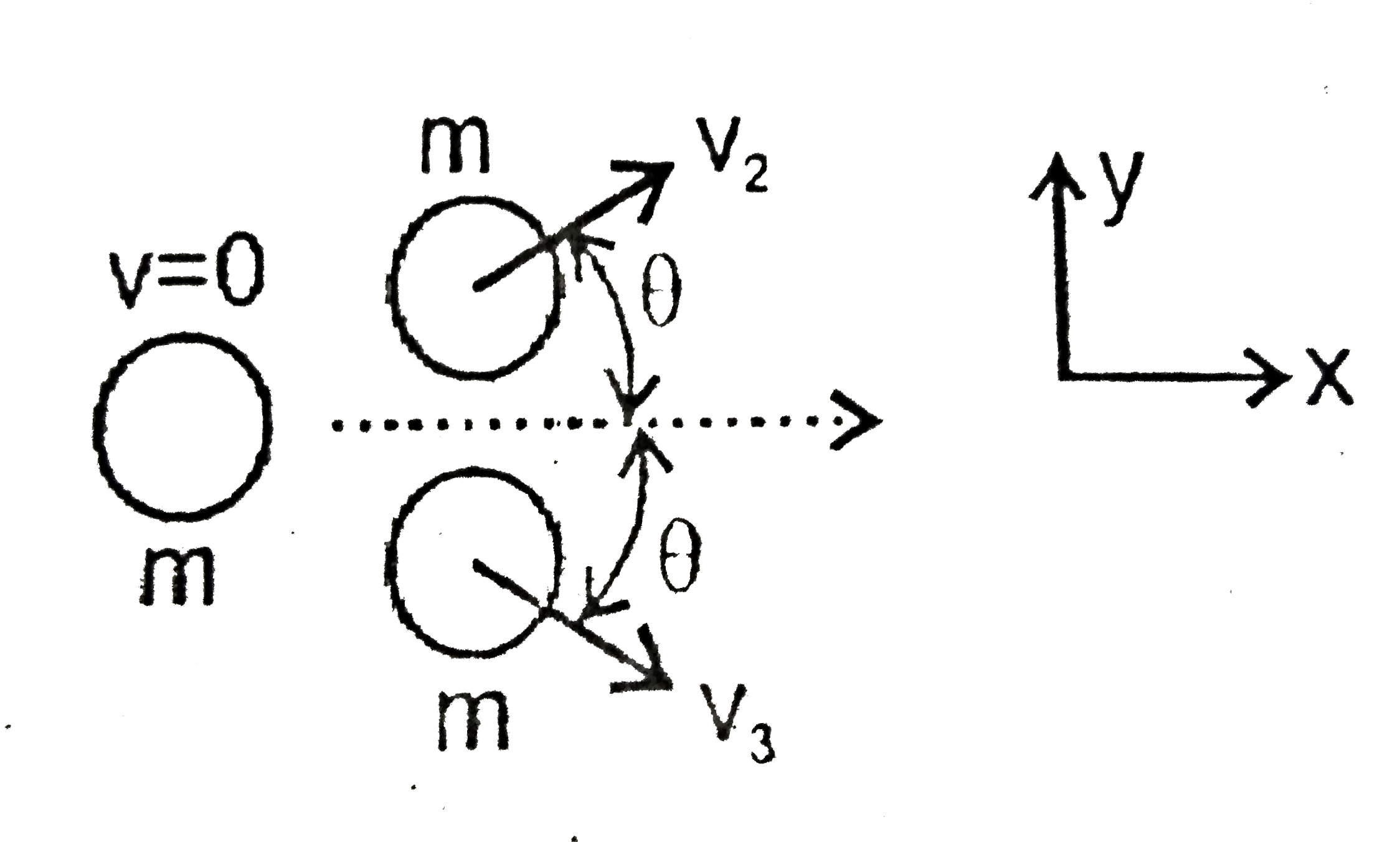
0=0+mv2sinθ−mv3sinθ
⇒v2=v3
Along x− axis
mv=0+mv2cosθ+mv3cosθ
mv=2mv2cosθ
v2=v21cosθ so v2=v3<v2∵cosθ<1
Topper's Solved these Questions
- BOOK - RESONANCECHAPTER - DAILY PRACTICE PROBLEMSEXERCISE - dpp 672videos
DAILY PRACTICE PROBLEMS
- BOOK - RESONANCECHAPTER - DAILY PRACTICE PROBLEMSEXERCISE - dpp 687videos
DAILY PRACTICE PROBLEMS
- BOOK - RESONANCECHAPTER - DAILY PRACTICE PROBLEMSEXERCISE - DPP 655videos
DAILY PRACTICE PROBLEMS
- BOOK - RESONANCECHAPTER - CURRENT ELECTRICITYEXERCISE - Exercise54videos
CURRENT ELECTRICITY
- BOOK - RESONANCECHAPTER - ELASTICITY AND VISCOCITYEXERCISE - Advanced Level Problems9videos
ELASTICITY AND VISCOCITY
Similar Questions
There are four arrangements of a solid cylinder and a plank as shown in the figures. Some surfaces are smooth and some are rough as indicated . There is no slipping at each rough surface. The plank and / or centre of cylinder are given a horizontal constant velocity as shown in each of the situations. Usinn this information fill in the blanks.
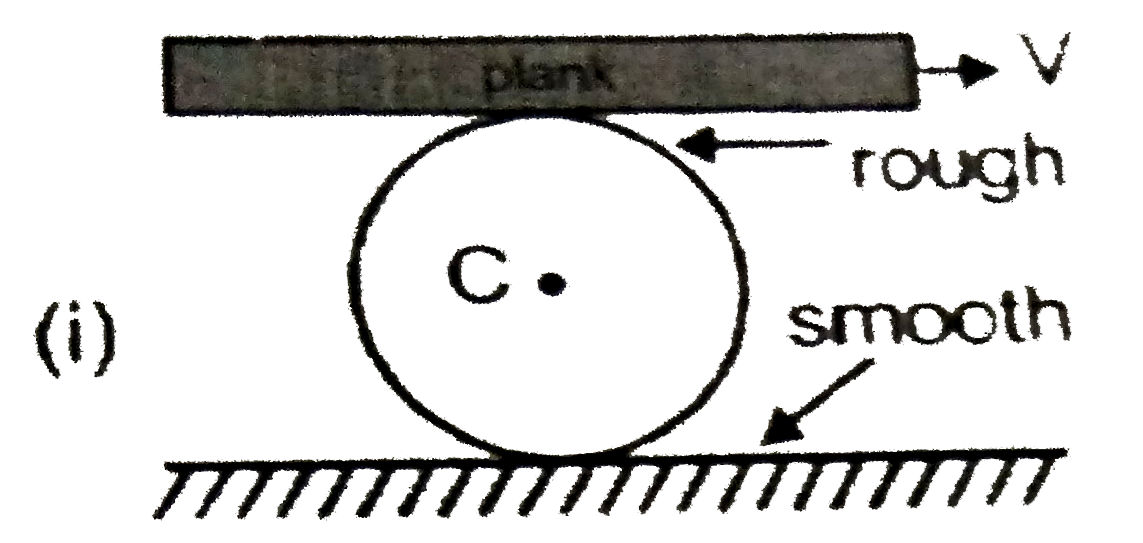 The speed of center of mass of the cylinder is ..........................
The speed of center of mass of the cylinder is ..........................
(ii) ,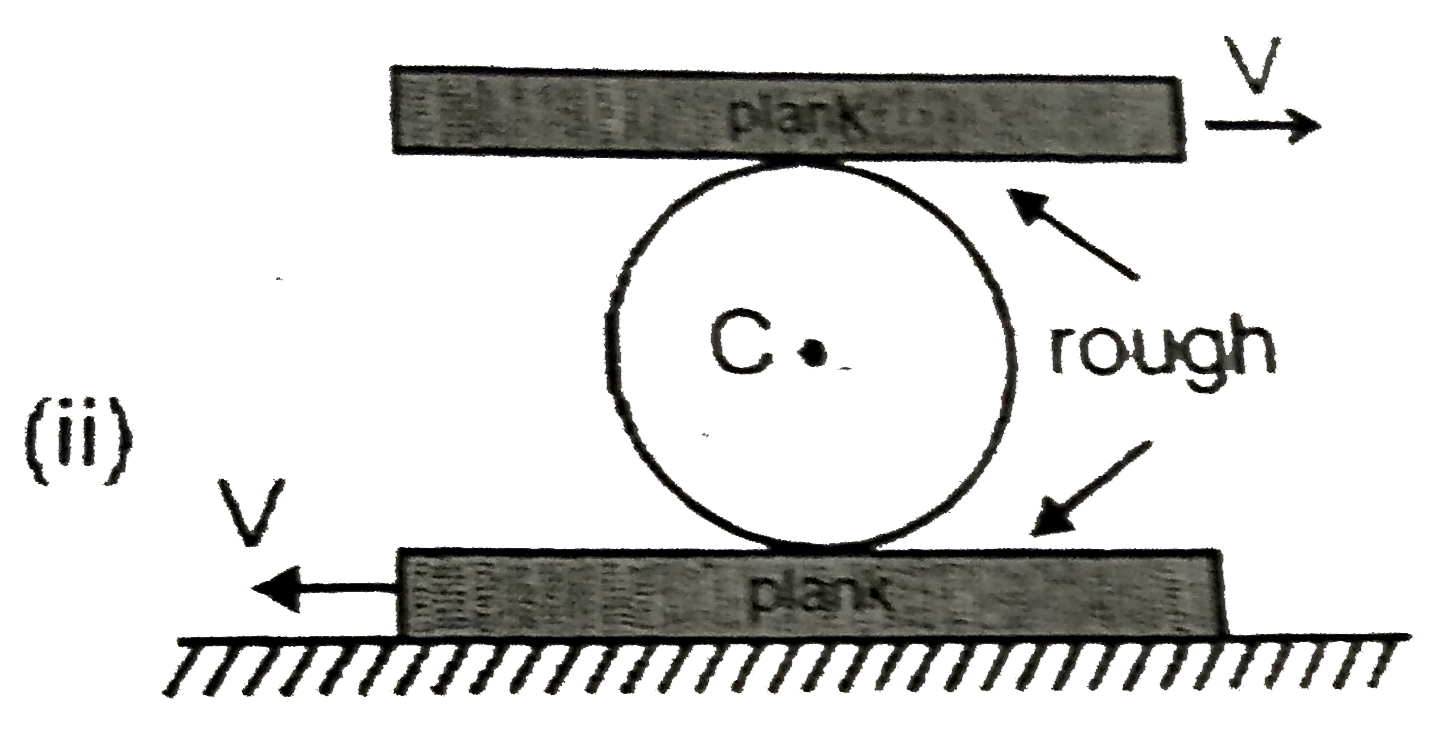 The angular velocity of the cylinder is ........................
The angular velocity of the cylinder is ........................
(iii),(RESPHYDPP04_XIE01537_Q03.png width=80%>Thespeedofcenterofmassofthecyl∈dris................<br>(iv),<imga≤ocr_imageload∈g=lazysrc=https://d10lpgp6xz60nq.cloudfront.net/physics_images/RES_PHY_DPP_04_XI_E01_537_Q04.pngwh=80%mx-autosty≤=background:white;>Theanga––rvelocityofthecyl∈deris.............<br>(a) V<br>(b) V//R<br>(c) 2V//R<br>(d) 4V//R<br>(e)ca∩otbedeterminedomthegiven∈formation<br>(f) Zero.07:10View SolutionA body of mass m is released from a height h on a smooth inclined plane that is shown in the figure. The following can be true about the velocity of the block knowing that the wedge is fixed.
 .01:56View Solution
.01:56View SolutionA bar of mass M and length L is in pure traslatory motion with its of mass velocity V . It collides with and sticks to a second identical bar which is initially at rest . ( Assume that it bocomes one composite bar of length 2L). The angular velocity of the composite bar will be
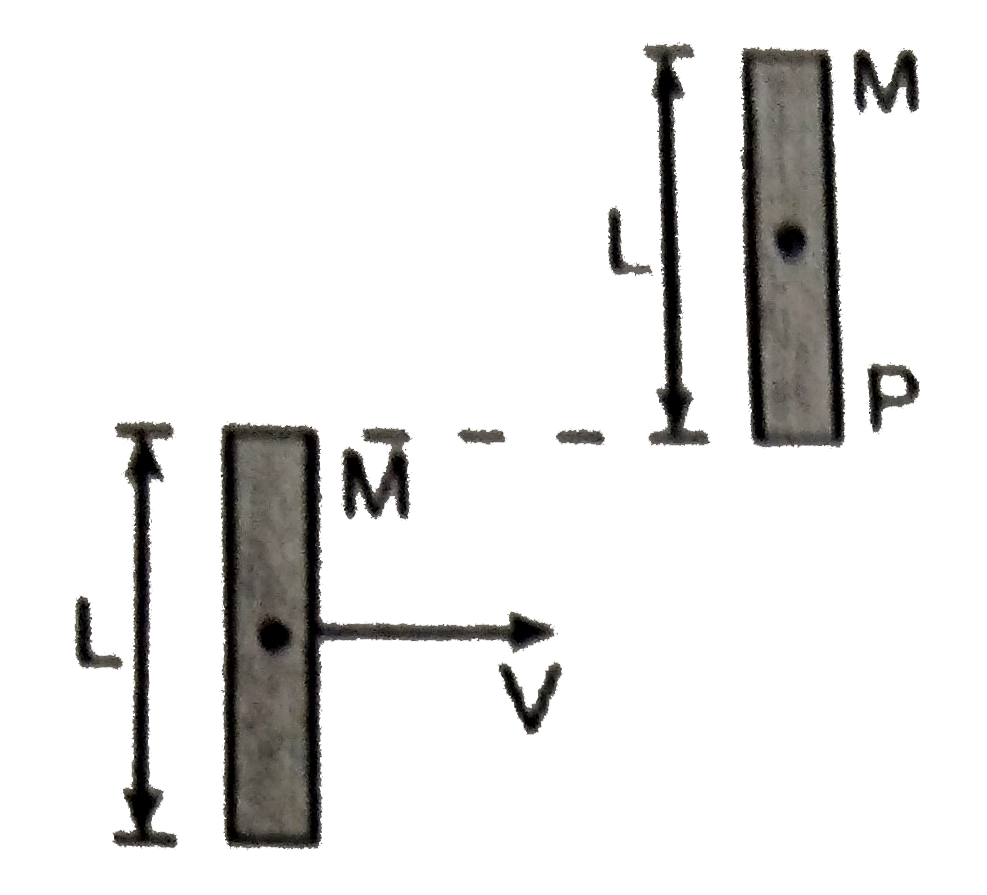 06:17View Solution
06:17View SolutionSpecific resistance of a wire depends on its
04:57View SolutionA wire loaded by a weight of density 7.6gcm−3 is found to measure 90cm. On immersing the weight in water, the length decreases by 0.18cm. Find the original length of wire.
04:20View SolutionA particle of mass m is moving along the x -axis with speed v when It collides with a particle of mass 2m initially at rest. After the collision, the first particle has come to rest and the second particle has split into two equal-mass pieces that are shown in the figure. Which of the following statements correctly describes the speeds of the two places? (thetagt0)
07:35View SolutionTwo particles of a mass 2m and m are tied with an inextensible string the particle of mass m is given a speed V as shown in the figure. Find the speed with which the particle of mass 2m starts moving.
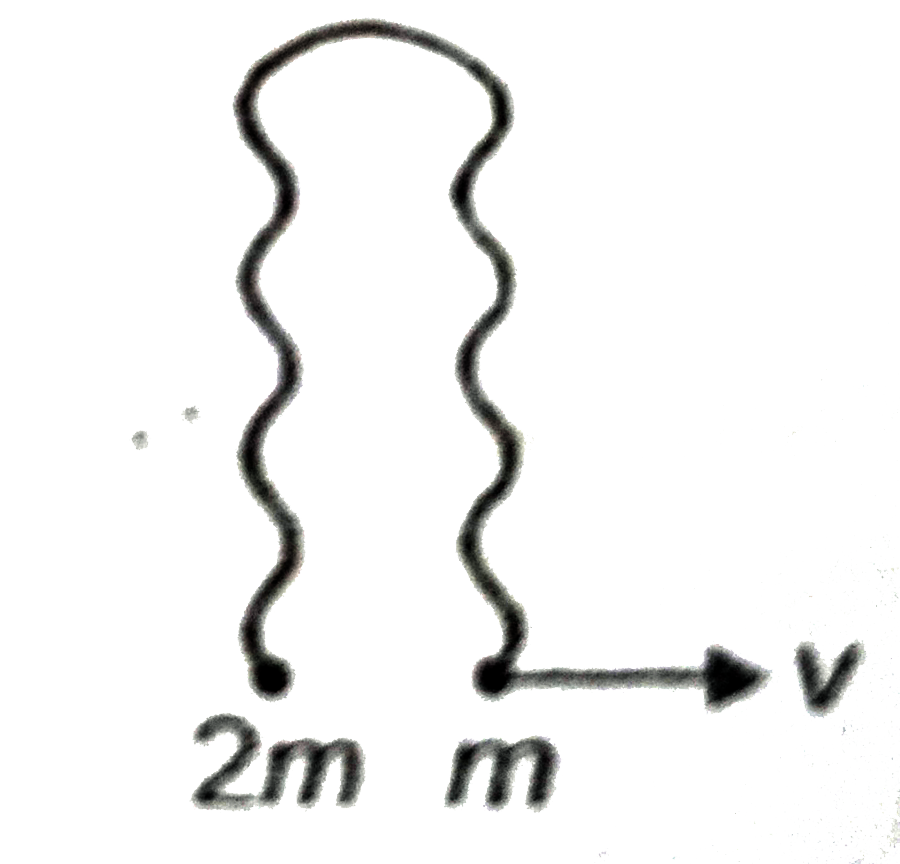 04:19View Solution
04:19View SolutionTwo particles of mass 2m and m moving with speed v and 2v respectively pependicular to each other collides perfectly inelastically, then Speed of the particles after collision
04:48View SolutionA particle of mass ‘m’ is moving with speed ‘2v’ and collides with a mass ‘2m’ moving with speed ‘v’ in the same direction. After collision, the first mass is stopped completely while the second one splits into two particles each of mass ‘m’, which move at angle 45∘ with respect to the original direction. The speed of each of the moving particle will be:
02:51View Solutionद्रव्यमान 'm' का एक कण चाल '2v' से जाते हुए एक द्रव्यमान '2m' के कण जो इसी दिशा में चाल 'v' से जा रहा है , से संघट्ट करता है । संघट्ट के बाद पहला कण स्थिर अवस्था में आ जाता है तथा दूसरा कण ही द्रव्यमान 'm' के दो कणो में विभाजित हो जाता है । ये दोनों कण आरंभिक दिशा से 45∘ के कोण पर जाते है । ये दोनों कण आरंभिक दिशा से के कोण पर जाते है । प्रत्येक चलायमान कण की गति का मान होगा -
View SolutionA particle of mass 0.1kg moving with an initial speed v collides with another particle of same mass kept at rest. If after collision total energy becomes 0.2J . Then
View SolutionA particle of mass m moving with velocity v strikes a particle of mass 2m at rest and sticks to it. The speed of the combined mass is
01:28View SolutionA particle of mass 'm' is moving with speed '2v' and collides with a mass '2m' moving with speed 'v' in the same direction. After collision, the first mass is stopped completely while the second one splits into two particles each of mass 'm' which move at angle 45∘ with respect to the original direction. The speed of each of the moving particle will be
View SolutionA particle of mass m moving with speed V collides elastically with another particle of mass 2m. Find speed of smaller mass after head on collision
View SolutionA particle of mass m moving with velocity v collides with a stationary particle of mass 2m, makinginelastic collision. The speed of the system after collision, will be
02:18View SolutionA moving particle of mass .m. makes head-on elastic collision with a particle of mass 2m. which is initially at rest. What is the fraction of K.E. lost by colliding particle ?
04:31View Solution

